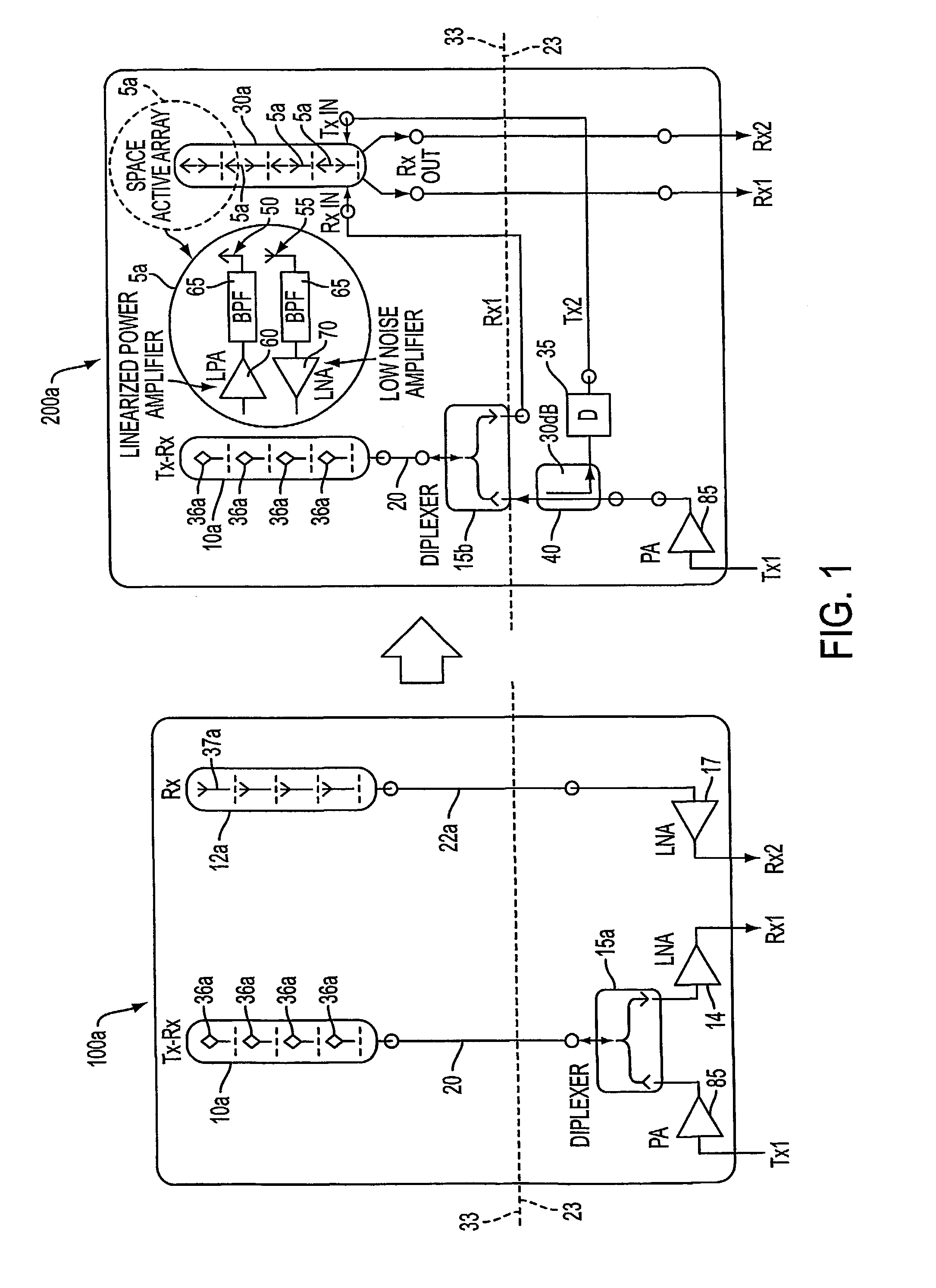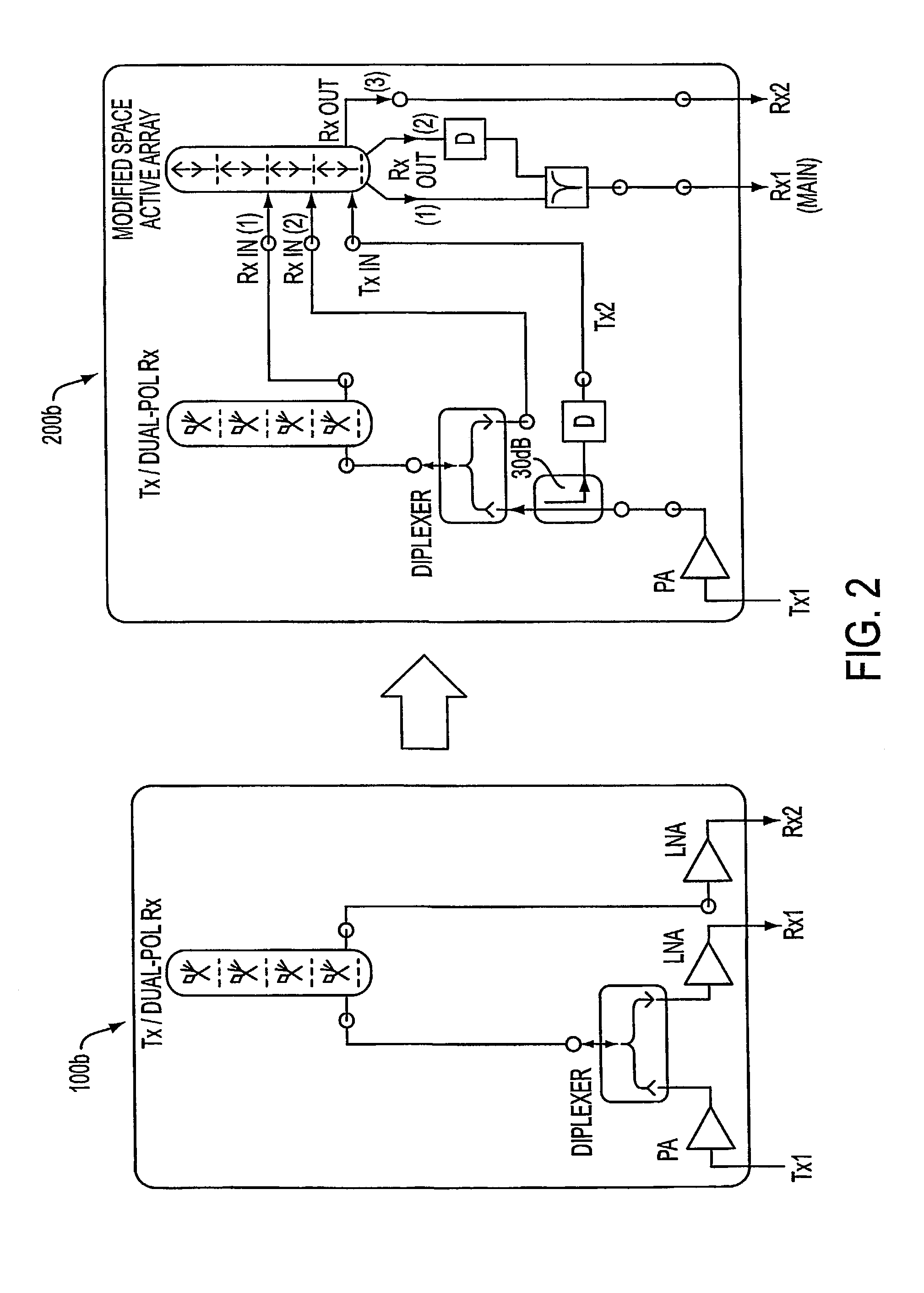Cellular base station augmentation system and method
a cellular base station and augmentation technology, applied in the field of wireless communication systems, can solve the problems of occupying additional space for extra antenna arrays, and achieve the effects of improving transmit and receive performance, facilitating the augmentation of cellular base station systems, and improving wireless communications systems
- Summary
- Abstract
- Description
- Claims
- Application Information
AI Technical Summary
Benefits of technology
Problems solved by technology
Method used
Image
Examples
Embodiment Construction
[0027]An existing base station antenna arrangement may be augmented by adding a new antenna array and / or replacing an existing antenna array with a new antenna array. FIGS. 1–7 illustrate various embodiments of such augmentations of existing base station antenna arrangements 100a–g with a new antenna array 30a–g. The new antenna array 30a–g may comprise an active antenna array, which includes an active radiator unit 5a or 5b having both receive and transmit antenna elements. By way of example, the circled portion 5a shown in FIG. 1 depicts an exemplary structure of the active radiator unit 5a that may be utilized in the active antenna arrays 30a–c of FIGS. 1–3.
[0028]FIG. 1 illustrates an augmentation method that modifies an existing base station antenna arrangement 100a, which comprises a main antenna array 10a and a secondary antenna array 12a, by replacing the secondary antenna array 12a with a new antenna array 30a, which may be active or passive. Namely, augmentation of the base...
PUM
 Login to View More
Login to View More Abstract
Description
Claims
Application Information
 Login to View More
Login to View More - R&D
- Intellectual Property
- Life Sciences
- Materials
- Tech Scout
- Unparalleled Data Quality
- Higher Quality Content
- 60% Fewer Hallucinations
Browse by: Latest US Patents, China's latest patents, Technical Efficacy Thesaurus, Application Domain, Technology Topic, Popular Technical Reports.
© 2025 PatSnap. All rights reserved.Legal|Privacy policy|Modern Slavery Act Transparency Statement|Sitemap|About US| Contact US: help@patsnap.com



